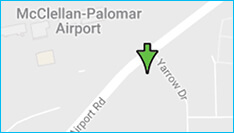With interest rates high, homeowners are turning to HELOANs (Home Equity Loans) to tap into their home’s equity without refinancing their first mortgage. Lenders have slowly reacted to the increased demand by making available more flexible qualifying options, making it easier to get approved.
What Is a HELOAN?
A HELOAN is a cash-out second mortgage, which gives you all of the loan proceeds at the time of the loan closing. It is basically a lump sum of cash advanced to you all at once, upfront.
You pay it back in the form of a monthly payment with a set payment and interest rate, much like a traditional 1st mortgage. This is a great option if you are locked into a low interest rate on your existing mortgage and you don’t want to lose it.
HELOANs are fixed-rate loans, making them a predictable way to pay off credit cards, home renovations, or other major life expenses, such as medical bills or college tuition. They come in the form of 30-year fixed, 20-year fixed, 15-year fixed, and 10-year fixed, fully amortized loan terms.
How to Qualify for HELOAN Second Mortgages
Traditionally, qualifying for a second mortgage means showing W-2s, tax returns, and a steady paycheck—but that doesn’t work for everyone. Self-employed borrowers, freelancers, and those with fluctuating income may need a more flexible approach, not based on these financial documents. These alternative qualifying income options are known as non-qualified (non-QM) mortgage loans.
What Are Non-QM HELOANs?
These are second mortgages that allow alternative documentation to verify income, including:
- Bank Statement Loans: Instead of W-2s or tax returns, lenders look at 12 to 24 months of your personal or business bank statements to show your income. They usually assume that 50% of your deposits go toward business expenses, unless you provide a CPA letter (a signed document from a Certified Public Accountant verifying your expenses) to prove otherwise.
- 1099-Only Loans: This is an ideal option for freelancers and independent contractors. Lenders use your 1099 forms (the tax documents that show how much income you earned from contract or freelance work) and count 90% of that income toward qualifying.
- Profit & Loss (P&L) Statement Loans: If you’re self-employed, you can use a CPA-prepared P&L statement to show your income. Lenders will use 100% of your net profit listed on the P&L. That’s what’s left after business expenses are subtracted from your total income.
- DSCR Loans: Investment properties might be eligible for a Debt-Service Coverage Ratio loan, which looks to determine if the cash-flow from the subject property will cover the required mortgage payment (or at least a portion of it).
If you’re self-employed or have non-traditional income and want to explore second mortgage options, give us a call at (760) 930-0569 to speak with one of our Mortgage Loan Originators. We’re here to discuss your goals and help you find the loan program that best suits your needs.
